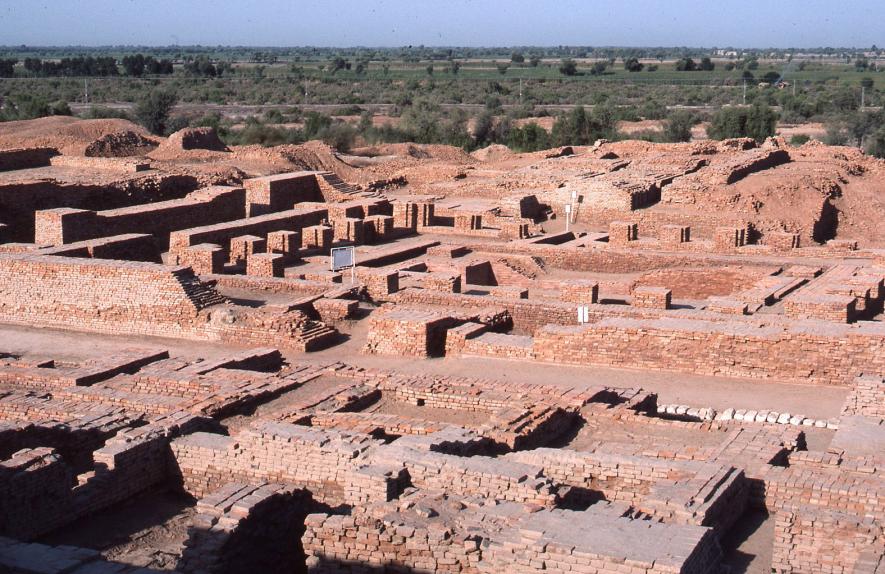New Study Says Harappans ate Meat, Were Especially Fond of Beef

Rakhigarhi. | Image Courtesy: archeology.wiki
The people of the Indus Valley were fond of eating meat and it formed a large part of their diet, a recently released study has said. More so, the Valley’s inhabitants preferred to consume beef over other meats. These findings were reported in a new study, titled ‘Lipid residues in pottery from the Indus Civilisation in northwest India’, published in the Journal of Archaeological Science on December 9.
As its title suggests, the researchers studied lipid (component of cells) residue in ceramic vessels used during the Indus Valley Civilisation, specifically during the time span known as the mature Harappan period (2600/2500 BC to 1900 BC). The study aimed to delve deeper into the food habits of the Harappans by analysing the lipid residue.
The study focused on five villages in India that were once part of the civilisation—Alamgirpur (UP), Masudpur (Haryana), Lohari Ragho (Hisar), Khanak (Bhiwani, Haryana), Rakhigarhi (Haryana) and Farmana (Rohtak, Haryana). The research team recovered 172 pottery fragments from these sites and a lipid residue analysis was done on them.
Ceramic lipid residue analysis has become a powerful tool of figuring the food habits of ancient people; it has been used across the world in many significant archaeological studies. “Ceramics are one of the most ubiquitous artefacts recovered during archaeological excavations of proto- and historic South Asian sites,” the study said.
The study also took into account of the biodiversity of plant products and the regional variation in the practice of cropping. According to it, both summer and winter crops were grown during the period.
The study highlights an important aspect in the food habits of the people living in the areas during the said period. “Out of domestic animals, cattle/buffalo are the most abundant, averaging between 50% and 60% of the animal bones found, with sheep/goat accounting for 10% animal remains. The high proportions of cattle bones may suggest a cultural preference for beef consumption across Indus populations, supplemented by consumption of mutton/lamb. Animal kill-off profiles for Indus settlements reveal a general trend of the presence of older adults for bovine and caprine/ovine species suggesting that meat consumption was complemented with the widespread existence of secondary-product exploitation,” it said.
There is also evidence that hares and birds were eaten whereas there was little evidence to suggest that chicken formed part of their diet. It said that large storage jars and ledge-shouldered jars could be linked to the storage of liquids like wine and oil.
The study was led by Akshyeta Suryanarayan as a part of her PhD in the Cambridge University. Suryanarayanan completed her PhD in February and presently is working in the French National Centre for Scientific Research. It was co-authored by the former VC of Pune’s Deccan College, Vasant Shinde and Professor Ravindra N. Singh of the BHU.
In an interview to The Indian Express, Suryanarayanan said: “This study is unique in that it has gotten to look at the contents of the vessels. Normally there would be access to seeds or plant remains. But through the lipid residue analysis, we can confidently ascertain that consumption of beef, goat, sheep and pig was widespread, and especially of beef.”
Get the latest reports & analysis with people's perspective on Protests, movements & deep analytical videos, discussions of the current affairs in your Telegram app. Subscribe to NewsClick's Telegram channel & get Real-Time updates on stories, as they get published on our website.
























